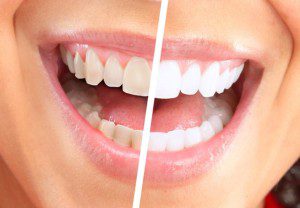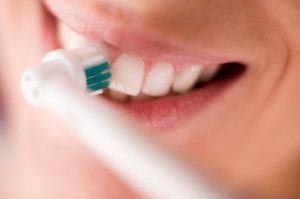By Guest Blogger, Diana S.
How to prevent cavities naturally

It is well-known that our mouth is lingering with bacteria. Every day, our strongest fighter against them is saliva – which is meant to wash them away and reduce their number. However, Saliva is no Superman, so it needs some help in fighting bacteria and preventing cavities. Find out how to do it in a natural way in the following paragraphs.
What is a cavity?
Cavity, also known as tooth decay and dental caries, is a hole or hollow in a tooth caused by a break down that is the result of the activity of bacteria. Their most recognizable syndromes include pain, change of colour (into brown or black), as well as inflammation of the surrounding tissue or the formation of abscess in severe cases.
When we eat food, especially acidic, our mouth is fighting a combat with this new environment by injecting or pumping saliva in order to wash it away and prevent the emergence of bacteria. The result of this natural way of washing is restoring balance in our mouth; however, when there is not enough saliva, or when the food or drink is too strong for it (such as in the case of coffee or other sodas), food leftovers stay in between teeth for a longer period, which further causes bacteria to start swarming in our mouth. When this happens for a longer period of time, cavities can occur.
Natural ways of preventing cavities
In a recent conversation with orthodontics, we have learned that our lifestyle can change the creation of cavities. Here is how:
• Avoid sugary food – Even though sugar does not directly cause cavities, its staying attached to our teeth and generally inside our mouth can cause many different bacteria to multiply and thus cause cavities. What you can do to avoid this is simply – avoid sugary food and drinks as much as you can. It would be best to stop taking them completely, but, since we are all humans (and occasionally need some boosting), even when you eat or drink food and beverages containing sugar – make sure that you have your toothbrush and toothpaste beside you. If that is not the case, tap water will do ad hoc, just to wash away the sweet taste – but you should definitely brush as soon as possible.
• Eat healthy food – Foods that your mouth and teeth will only benefit from are apples, which help washing and brush away food leftovers, as well as nuts, cheese and high fibre food which increase the production of saliva and strengthen enamel. Xylitol is a natural sweetener which can replace sugar in your food, and you can even take it in in the form of sugar-free gums, which are rich in xylitol.
• Oil pulling – This ancient Ayurvedic technique implies swishing your teeth with sunflower or sesame oil for approximately 20 minutes reduces mouth bacteria and plaque, and makes your teeth whiter and brighter.
• Brush early in the morning – This is obvious, but is is important to highlight that you need to brush bacteria that have built up during the night, as well as plaque which is a normal consequence of sleep.

Also, you should brush after every meal, but the morning and night brushing are simply a must. Of course, do not forget to clean your braces thoroughly every day (here are some basics differences between invisalign and braces).
Even though genetics can play almost the biggest role in the emergence of cavities, there are, still, some things we can do in order to prevent them. Eating a healthy diet, which includes eating fruit, vegetables and drinking a lot of milk on a daily basis, with addition to and avoiding sugary drinks and coffee can help you keep the level of bacteria in your mouth on a reasonable level.
Tia, and TipsfromTia.com is trying to keep you looking good and
feeling good, from the inside out. If you’ve got a problem or a tip email me! Be sure to Like and share on Facebook or Follow on Twitter or Instagram.
